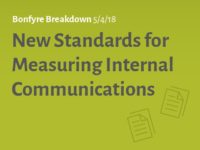While employee engagement has many contributing factors, foundational feelings of contribution, trust, and altruism are all derived from one thing—human relationships.
Companies are constantly chasing the costly “white rabbit” of employee engagement. America’s disengaged workforce is costing companies $450 billion to $550 billion annually (Gallup), making the “feeling” of disengagement an actual financial loss. The reason most companies are falling short on the engagement front is a lack of focus on human relationships.
There are many ways to define engagement, but most would agree it is expressed and experienced as a feeling about the work experience. And while engagement has many contributing factors, we argue that foundational feelings of contribution, trust, and altruism are all derived from one thing—human relationships.
Take the classic example of a highly engaged employee. When visiting NASA in 1962, President John F. Kennedy asked a custodian, “What do you do?” to which he famously replied, “I’m helping put a man on the moon.” Sure, NASA has one of the most compelling mission and vision statements imaginable, but do you think if other NASA employees ignored, avoided eye contact with, or looked down upon this custodian that he would have responded less enthusiastically?
The custodian’s sense of contribution and relationships with NASA staff was not limited to his “friends,” but included everyone with whom he interacted. In this way, we must consider workplace relationships as a spectrum that is driven by innumerable verbal and non-verbal interactions through which employees discover commonality and create relationships.
Further, trust is synonymous with relationships and without it, organizations suffer from poor productivity (lots of bureaucracy), lack of innovation (fear of failure), and more. As sociologist Bernard Barber notes, trust is built on relationships because they “create personalized knowledge and relatedness through shared values and interests.” Since the repeated interactions and dense social relations required to create personalized trust are seemingly impossible in a large organization today, we think it can be made feasible at scale through digital communication.
Empowered by trust, employees are able to reach new heights in collaboration, problem solving, and innovation. They become altruistic and invest more of their discretionary time and effort to help each other and the company they work for. It’s why stories like that of our NASA custodian are so powerful—you can feel their commitment and willingness to contribute in any way they can to achieve the company’s mission and help their colleagues.
Related: 3 Tips to Make Employee Engagement Programs More Effective
So what do you do to shift the focus of your office to building relationships?
1. Invest in face-to-face interaction.
Some 93 percent of the information we convey to others is done through non-verbal expressions and tone of voice. Videoconferencing, thoughtful office space design (which, yes, may include ping pong tables), and events are critical to this.
2. Create a community.
Proactively identify and create opportunities for employees to come together around an idea and share interests virtually and in-person. Discovering and building commonality is what strengthens all connections across the workplace relationship spectrum.
Even simple things such as eating lunch together have been shown to increase team happiness and productivity.
3. Embrace new data points.
Go beyond the semi-regular survey and assess sentiment, personas, topics of discussion, and relatedness in real time. Correlate these to employee retention and performance survey results for a real understanding of your organization’s health.
4. Celebrate success.
A 2013 report by the Harvard Business Review found that recognition for high performers had the greatest impact on employee engagement. Celebrate not only the victories, but also the behaviors that will help you build a culture of success.
5. Ask for frequent input.
Get feedback from employees and act on it. People love what they create, and co-creation is a powerful way to build relationships. This is the “Ikea Effect” in action—you love something more when you help to make it.
With mounting evidence correlating employee engagement to the bottom line, combined with a workforce that is remote at least part time reaching nearly 50 percent in the U.S. and an inevitably more tech savvy and digital engagement-hungry workforce, companies must invest in building relationships both in the office and online if they hope to get and keep employees engaged.
This article was originally published by Training Magazine.



 3 min
3 min




